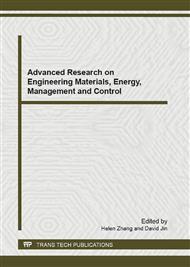p.625
p.629
p.633
p.637
p.641
p.646
p.650
p.654
p.660
Electrochemical Study on S2- to the Surface Passivation Film of T23 Material Used in Supercritical Unit Tubes
Abstract:
This article had studied the corrosion behavior of S2- which destroyed the surface passivation film of T23 materials in supercritical water tubes by means of electrochemistry workstation, X-ray diffraction(XRD), and Scanning electronic microscope(SEM). According to the experimental results and analysis, it can be concluded as followed: After the T23 surface formed the passivation film, T23 was eroded in the S2- solution.Finally, T23 surface pitting process entered the stable state pitting time, while the potential and the current were stable after 5000s by electrochemical noise; The T23 surface corrosion product presented the massive fragments at 150°C in autoclave experiment, its principal constituent was Fe2(SO4)3 or Fe2(SO3)3, which had direct relation with the dissolved quantity of Fe3+ and the oxygen existed in the open system.
Info:
Periodical:
Pages:
641-645
Citation:
Online since:
January 2012
Authors:
Keywords:
Price:
Сopyright:
© 2012 Trans Tech Publications Ltd. All Rights Reserved
Share:
Citation:


